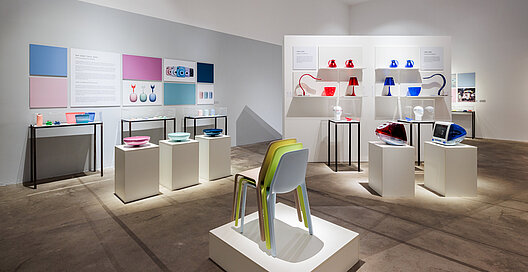The Value of Colour in Design
In industrial and product design, colour design plays a significant role in brand perception and product use. Colour is a design factor that lends products an aesthetic quality beyond their form and function and gives brands an unmistakable identity. Although many brand colours were created by chance, the recurring use of characteristic colours in design and advertising has shaped our consumer culture, as the examples of Nivea blue or Hilti red show. Colours can characterise brands, symbolise their values and convey the quality of products. They play a decisive role in distinguishing a company’s products from those of its competitors.
Design and Colour Aesthetics from Bauhaus to the Present Day
Colour worlds change through the ages - from the beginning of the 20th century to the present day. Every generation naturally grows up in a world of colour that they share with those who grew up at the same time under comparable social and cultural conditions. Beyond fashion trends, we can observe in design which colours have shaped our culture and our society for a certain time. Our perception and our identity are reflected in the different coloured objects of these periods.
While the primary colours blue, red and yellow were the dominant colours at the Bauhaus at the beginning of the last century, for example, many pastel colours reminiscent of the 1950s can once again be seen in today's product and living environments. They are an expression of a search for orientation and identity in a world that is changing and in which questions of diversity and identity are more topical than ever. In design, this development is reflected in the colour trends of a wide range of products. The subtle colours of loudspeakers and headphones can also be found in the design of cameras and office chairs. Pastel-coloured objects can also be found in the home and bathroom, expressing our time, our perception and our identity.
Photos and texts are from the exhibition Colours of Our Time - Identity and Difference in Design, which we showed in 2024.





